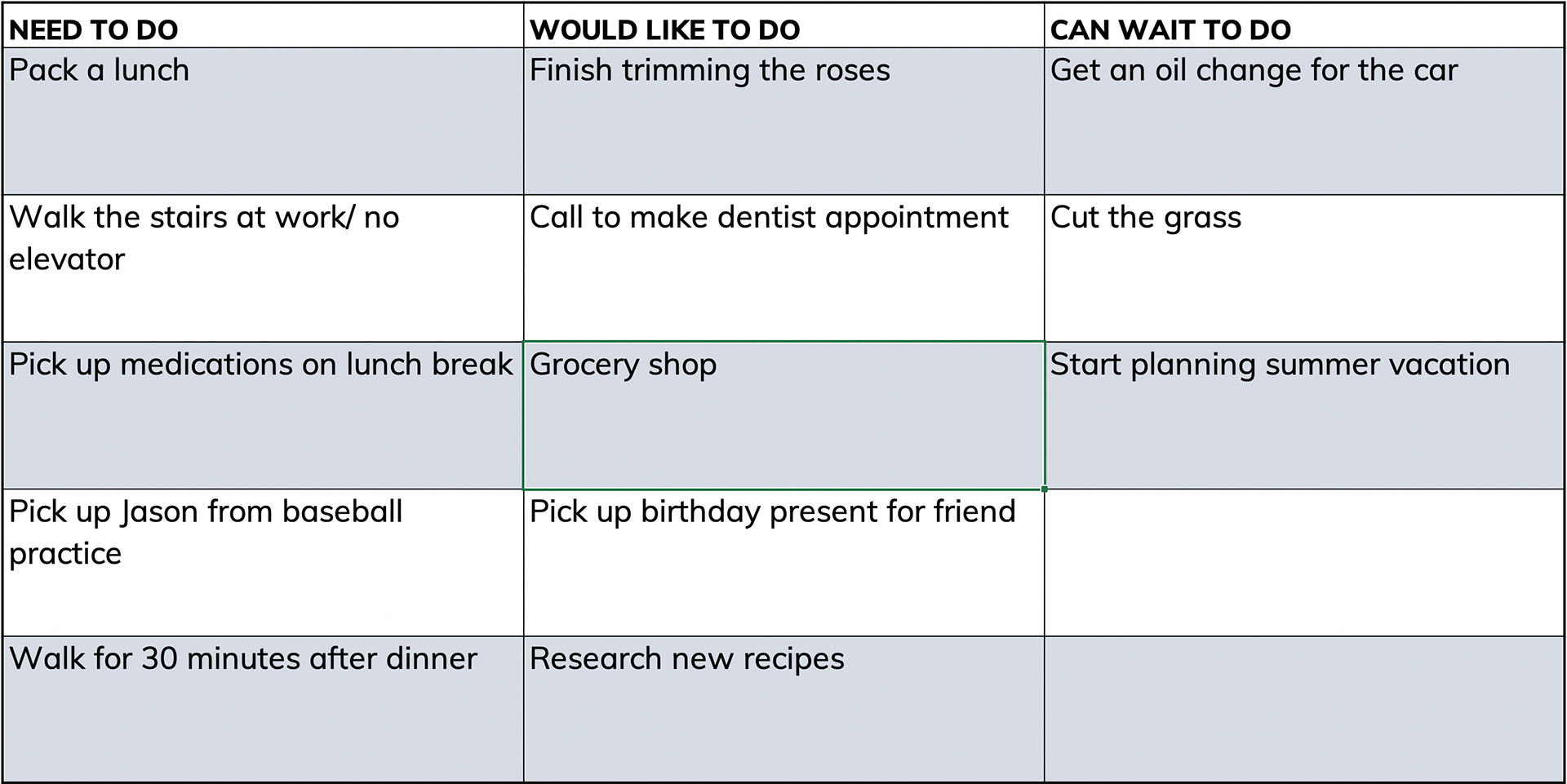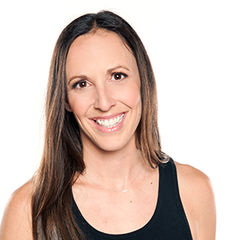Recently, I was at a continuing education workshop with other personal trainers, and discovered I was the only person in attendance who also had an American Council on Exercise Health Coach certification. At the end of the day, we were assigned case studies pertaining to various clients. The information included past and current health habits, food journals and reasons for hiring a trainer. Our assignment was to determine how we would best help this “client.”
As we shared our programs for these clients, I was taken aback by the other trainers’ recommendations. “You’re going to have to stop eating chips.” “You’re going to have to train with me three times a week and then do 60 minutes of cardio on the other four days.” “If you want to lose weight, you have to count every calorie you consume.”
I raised my hand and asked, “What if they don’t want to count calories? What if that stresses them out and hasn’t worked for them in the past?” The response was something like, “Well, that’s why they’re hiring me—to tell them what to do!”
As a health coach, I was trying to point out that a client’s health journey should be more collaborative. Yes, a client may hire us because he or she needs help, but that doesn’t necessarily mean that we just tell the client what to do. As a certified Health Coach, I know that when a trainer and client collectively approach the research and planning of the program, the client is more likely to adhere to new healthier choices.
Here are three ways to start shifting your thinking and your conversations with your clients, beginning on your very first meeting.
1. Gain an understanding of their values
When you learn about your clients’ values, you’ll begin to see what drives and motivates them. Use open-ended questioning to determine how a client’s long-term values measure up with his or her day-to-day habits and health choices.
This isn’t a time to jump in and start pointing out what’s wrong or out of balance in a client’s life. It’s the time for you to ask the right questions so the client can self-evaluate and openly share. Here are some questions to help you get started:
- “What are the top five most important things in your life?”
- “Have you established guidelines for yourself and your family that are tied to those five important things?”
- “How do you feel about your life accomplishments thus far?”
Once you have a deeper understanding about what drives your client, you can begin to link new habits and behaviors to those values. For example, if “spending time in the evenings with the kids” is one of the most important things for a client, you might suggest taking a nightly walk as a family. If the kids are old enough, invite them to one of the workouts. If you use the client’s stated values as the foundation to your coaching, you’ll be able to guide him or her into realistic and meaningful change.
2. Determine what they want out of their future
In her Ted Talk, time-management expert Laura Vanderkam shares an awesome strategy for helping people determine their future goals. You know those cards and letters that flood your mailbox every December? Vanderkam recommends writing out next year’s holiday card as a way to clarify one’s goals. Try this with your clients. Have them write out what they see happening next year, with the belief that the year will be the best one yet. What types of things do they want out of the year? What do they envision happening with their careers, their personal life and their well-being?
This activity is an excellent way to convey how actions are connected to values. You can then begin a conversation with the client about small action steps he or she can take to start moving in the direction of that year-end goal. If running a 5K is in that holiday card, then starting a walking program two or three days a week might be appropriate, and researching races that will happen in three to four months can be on the client’s “to-do” list for the week.
3. Help them prioritize their time
Once clients know what they need to be doing on a daily basis to fulfill their goals, the final strategy is to get them to prioritize their time around it.
Let’s be real—every action that we take isn’t connected to our values. We have to make time in our day to do laundry, wash the car and a million other errands. These activities might not be high on the values list, but they still need to get done.
Discuss with your clients how they want to manage the day and the week ahead. Some people prefer to use a hand-written planner that allows them to write down, hour-by-hour, what they need to do. Clients often say that sitting down on a Sunday with their planner is actually very relaxing and sets the tone for a great, organized week ahead.
Other clients, however, might prefer filling out a chart. For example, before bed, have them organize and prioritize the next day into three categories: “Need to do,” “Would like to do” and “Can wait to do.” For example:

It’s hard to beat the satisfaction that comes from checking things off a list. The client now has a clear picture of what needs to happen each day. Once items are checked off in the “needs to do” category, if time allows, he or she can move over to the “would like to do” category. At the end of the day, as the client plans the next day, he or she will move items over from the “would like to do” and the “can wait to do” columns.
When you incorporate this dynamic approach to overall wellness into your sessions, your client-trainer relationship will strengthen. Empowering your clients to brainstorm an action plan with you is more meaningful than simply telling them everything they can and can’t do.




 by
by 








 by
by